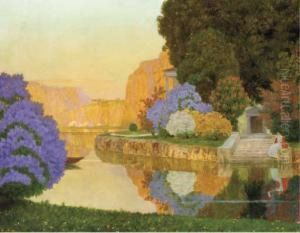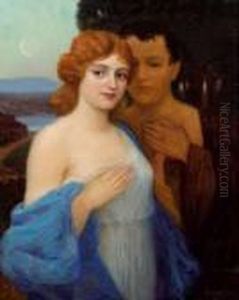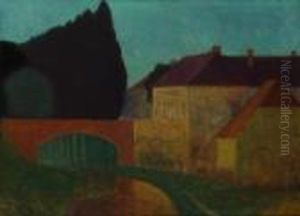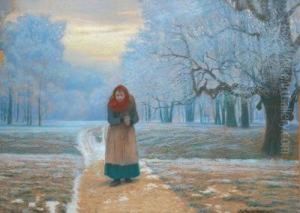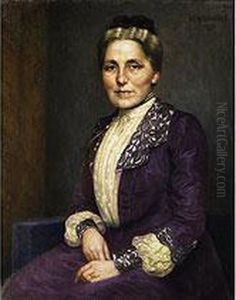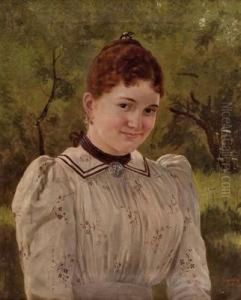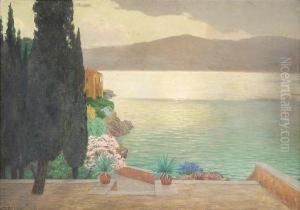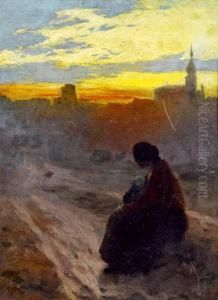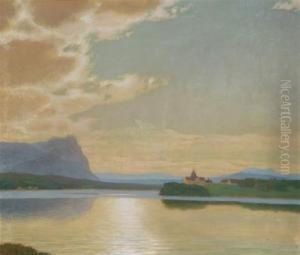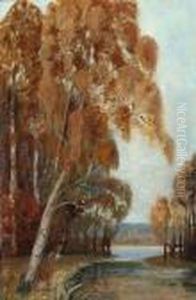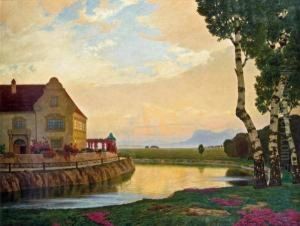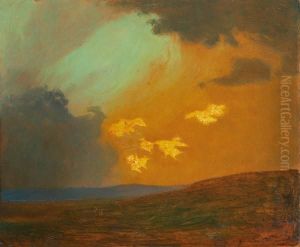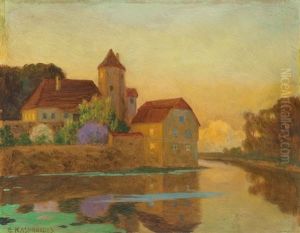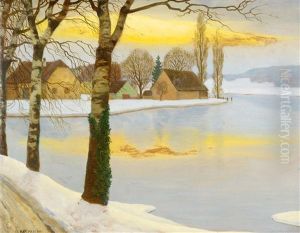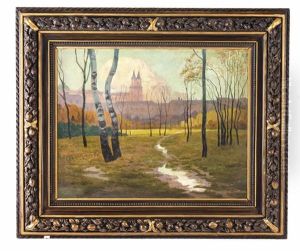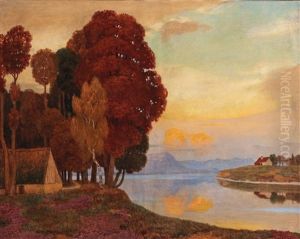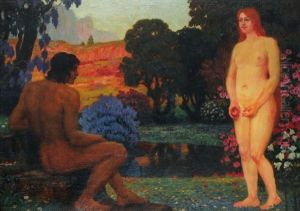Eduard Kasparides Paintings
Eduard Kasparides was an Austrian painter known for his atmospheric landscapes and city views, with a particular focus on the depiction of light and weather conditions. Born on September 14, 1858, in Biala, Galicia (now part of Poland), Kasparides demonstrated an early talent for art and pursued his passion by studying at the Academy of Fine Arts Vienna under the tutelage of Christian Griepenkerl and Carl Wurzinger.
After completing his studies, Kasparides traveled extensively throughout Europe, drawing inspiration from the diverse landscapes and urban environments he encountered. His travels took him to Germany, Italy, and France, where he absorbed various artistic influences that would later be reflected in his work.
Kasparides was particularly influenced by the Barbizon School and the Impressionists, which is evident in his loose brushwork and his preoccupation with light. He was known for his ability to capture the ephemeral qualities of the atmosphere, rendering scenes that felt alive with the changing conditions of weather and time of day. This sensitivity to light effects is especially notable in his depictions of the Viennese Prater and other local scenes, which often featured the nuanced interplay of sunlight and shadow.
Throughout his career, Kasparides exhibited his work widely, including at the Vienna Künstlerhaus, of which he was a member, and in other venues across Europe. His paintings were well received, and he gained a reputation as a skilled landscape painter. Despite the popularity of his work during his lifetime, Kasparides did not achieve the same level of enduring fame as some of his contemporaries.
Eduard Kasparides' contribution to Austrian art, however, remains significant. His landscapes and cityscapes offer viewers a glimpse into the world of late 19th and early 20th-century Europe, seen through the eyes of an artist deeply attuned to the subtleties of light and atmosphere. Kasparides continued to paint until his death on November 14, 1926, in Vienna. His works can still be found in various art collections and museums, appreciated for their atmospheric beauty and technical skill.
